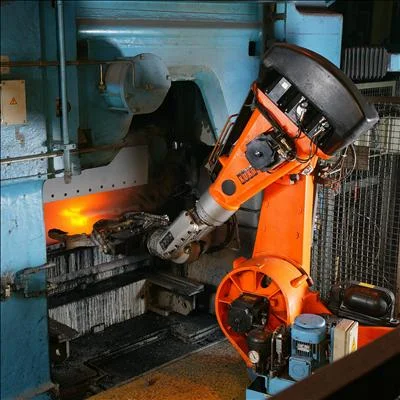David Warsh: Robots will wipe out many jobs and may reduce population
Pick and place robot in factory.
SOMERVILLE, MASS.
The latest in a series of alarming papers emanating from the Economics and Urban Studies departments of the Massachusetts Institute of Technology to have made a splash is “Robots and Jobs: Evidence from U.S. Labor Markets’’.
Last year it was “The China Shock: Learning from Labor-Market Adjustment to Large Changes in Trade.’’ Next, perhaps, “The Fall of the Labor Share and the Rise of Superstar Firms.’’ And soon after that, “Computers and Populism: Artificial Intelligence, Jobs, and Politics in the Near Term’’. But for now, “Robots and Jobs” is bad news enough for one day.
To cut to the chase, have a look at the map in Thomas Edsall’s account in his New York Times online column last week, “Robots Can’t Vote, But They Helped Elect Trump’’. If you’ve seen something like it before, it is because you have studied the China Shock map in Bob Davis and Jon Hilsenrath’s painstaking account of the findings in David Autor, David Dorn and Gordon Hanson’s landmark paper.
The robot study is a joint product of MIT thought-leader Daron Acemoglu and Pascual Restrepo, a rising star at Boston University. The authors quote Nobel laureate Wassily Leontief, writing in 1952: “Labor will become less and less important… more and more workers will be replaced by machines. I do not see that new industries can employ everybody who wants a job.” At last, they imply, the wolf may have arrived at the world’s door, thanks to computers.
Their paper consists of the usual careful application of a model to data, in this case commuting zones, with a view to estimating the effect of robots on employment and wages. They conclude that each additional robot reduces local employment by 6.2 workers, and that an additional robot per thousand employees reduces area wages by a little less than 1 percent (relative to other zones with no such exposure). Aggregating cautiously, they calculate that each additional robot costs a loss of between 3 and 5.6 jobs nationally.
So far the number of jobs lost due to robots has been modest – between 360,000 and 670,000 in the U.S., out of a labor force of more than 160 million people. But robots are expected to be employed much more widely in the next 20 years, they say, with the world stock as much as quadrupling by 2025, in one study’s scenario of rapid diffusion. The harm to employment and wages could accelerate once robots exceed a critical level, they say, as spillover effects dampen demand for housing, retail, and services.
All this has happened before. In 1870, almost half the U.S. population was working on farms. By 2008, less than 2 percent of the work force, around 2 million people, were directly employed in agriculture. There was plenty of turmoil along the way. Meanwhile, the share of manufacturing employment has been declining as well, from 32 percent of nonfarm jobs in 1910 to less than 9 percent in 2010. Eight million persons worked in manufacturing in 1910, when the U. S. population was 92 million; 12 million in 2015, when the population had grown to 323 million. Growth in service-sector jobs, broadly defined, accounts for the rest of the 126 million full-time workers today.
Further economic growth can do only so much. If there is a way out of the seemingly inevitable journey to idleness and discontent, it works through demographics. This much is intimated in “When Work Disappears: Manufacturing Decline and the Falling Marriage Market Value of Young Men’’, another paper by “China Shock” authors Autor, Dorn and Hanson. Job losses stemming from globalization between 1990 and 2014, they found, elevated premature mortality among males, and reduced marriage and fertility; it raised the share of unwed mothers and children living in poverty as well.
Something like this has been happening in Europe, where population is shrinking, in Bulgaria faster than anywhere else. Population growth declining in China as well, where for 30 years one child per family was the rule (increasingly loosely enforced). Fewer jobs may ultimately mean fewer people around the world. But what a lot of heartbreak on the way.
David Warsh, a veteran financial and political columnist and an economic historian, is proprietor of economicprincipals.com.
